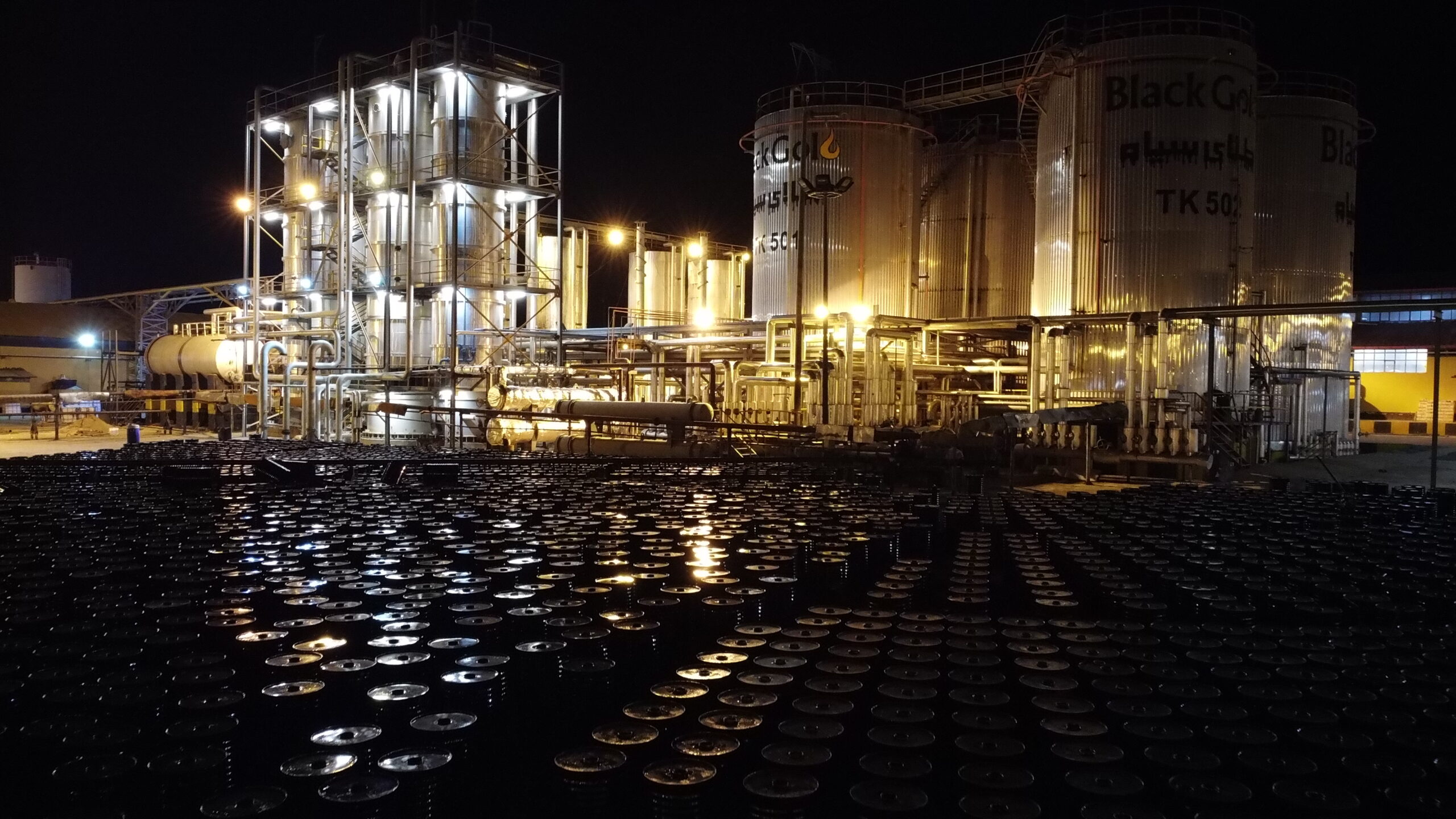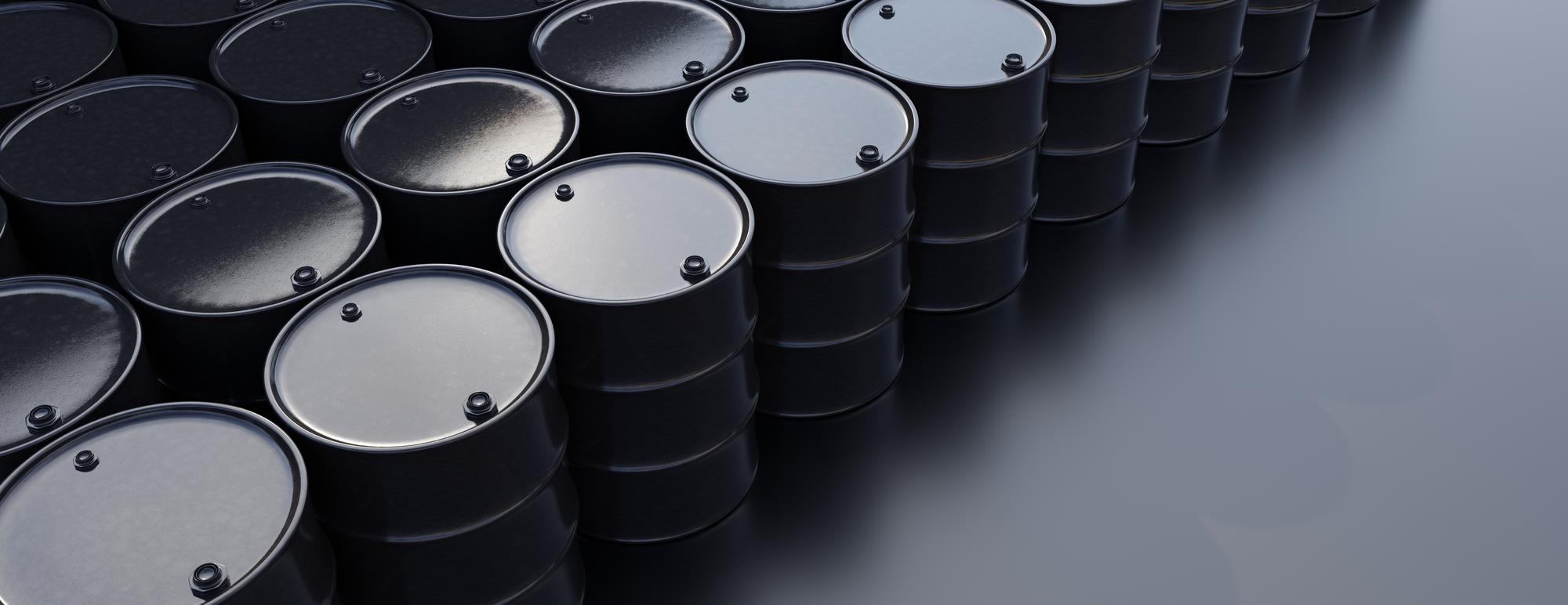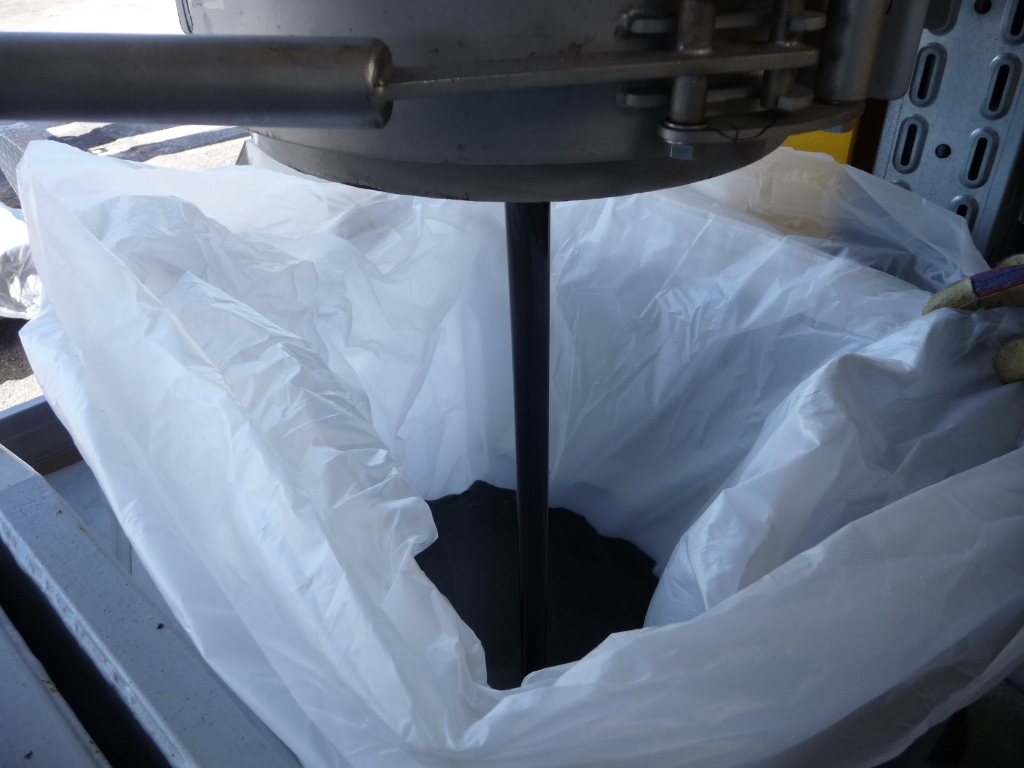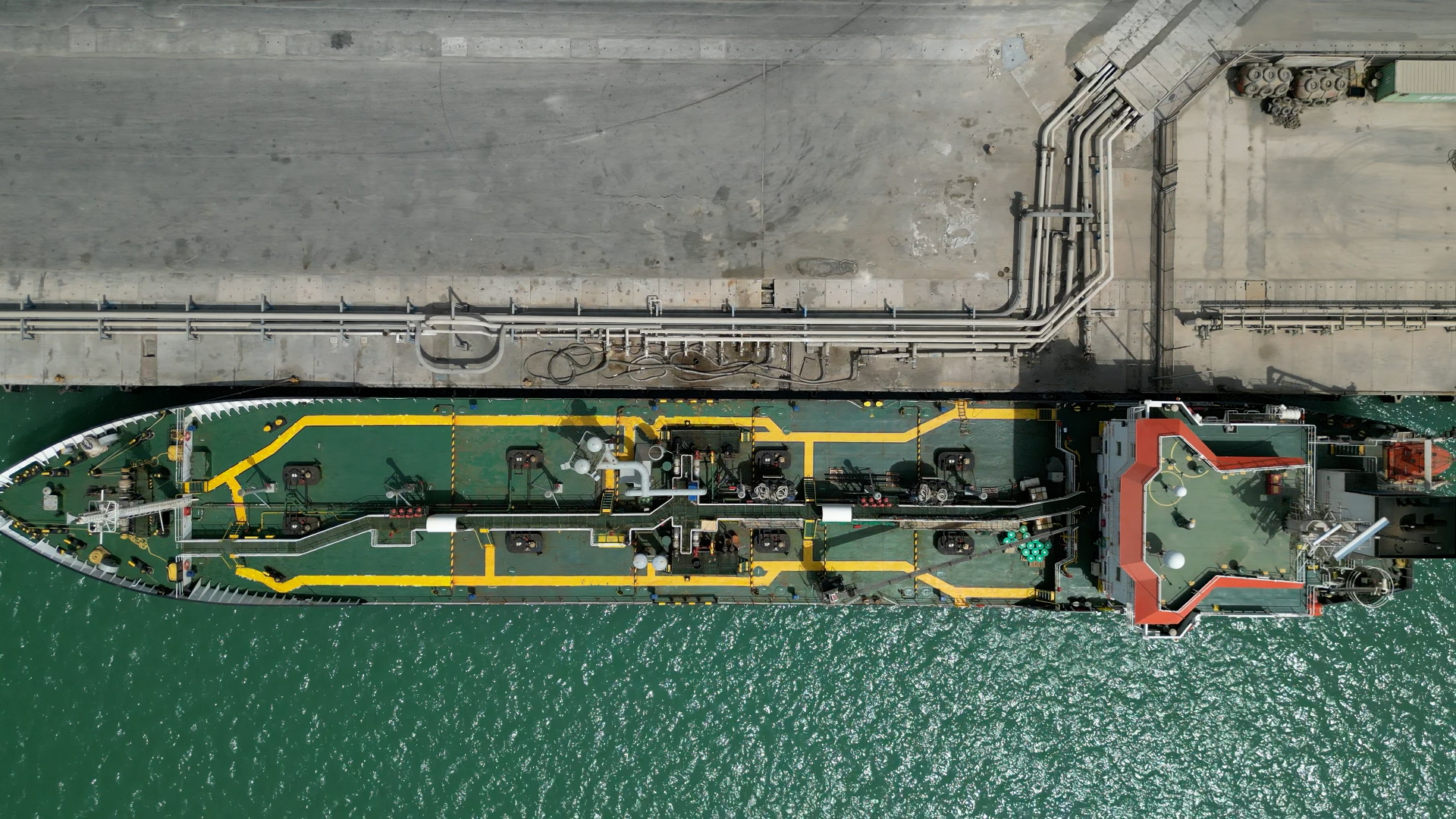From Crude To Gold
Black Gold will continuously develop innovative solutions to supply materials and services suitable for road construction and maintenance by focusing in safety, environment and contributing to the development of better living standards of society by adhering to the principles of good corporate governance for sustainability.

Designed and built specifically for the production of high quality bitumen, the refinery has a 550,000 t/year distillation plant and consists essentially of an atmospheric distillation section and a vacuum distillation section. There are also two bitumen oxidation reactors for the production of oxidized bitumen and a plant for packaging oxidized bitumen blocks.
Thanks to its dimensions, storage layout and skillsets within the organization, the “Tailor's shop” production model makes it possible to produce different, specialized quality bitumens.
We produce on our own behalf as well as for third-parties, an area in which we collaborate with the major refining companies.
Production Process
Process by which compressed air is blown into vacuum bottom residue, typically at 230–260 °C in a reactor. This process results in complex reactions (such as Dehydrogenation، Polymerization، Oxidation). different grades for suited applications produced Due to ratio of air blowing
Bitumen process in acording to the following methods
-
Air Blowing : Process by air is blown into vacuum bottom residue, typically at 230–260 °C in a reactor. This process results in complex reactions (such as Dehydrogenation، Oxidation and Polymerization)
-
Blending: process base on blend of several petroleum product for production of new product such as Bitumen

Bitumen Packing
Bitumen is a highly viscous liquid, so its packaging is very important considering the factors like cost, environment, storage, and shipping. The bitumen packaging classifies to three different types such as new steel drum; jumbo bag; and bulk that according to their specification, bitumen volume and weight, the best type of packaging will be chosen. To understand more about these packages, we friendly invite you to see our comprehensive video about bitumen packages and read this article.

Bitumen Drum Packaging
Drum is the common packaging of bitumen due to its safety and consistent quality. It varies dependent on bitumen volume, height, thickness and lid. The body thickness of drum is 6 mm. These steel drums are used for transporting and packing liquids and pasty materials like bitumen.
Bitumen Jumbo Bag Packing
Jumbo bag is a large flexible multi-layer bag which is called bitu-plast, bitu-bag, polybag and poly cube. This type of poly-alkene bags with high quality and resistance is one of the best types of bitumen packaging. The reasonable price and its ease of use have made it too popular in industries. Recently bitumen exporters use jumbo bag instead of steel drums. Unlike drums, jumbo bag reduces bitumen waste by about 3 to 4 %. It’s necessary to heat the bitumen when discharging the drum, but in jumbo bag, it’s enough to tear the outer layer of bitumen jumbo bag and throw the bitumen jumbo bag in the molten furnace with the inner layer.


Bitumen Bulk Packing
In bulk trade, you require bitumen trucks to pick up the cargo from the refinery and convey it to the bulk vessel, the bitumen tanker, at the port. At the destination, another bitumen truck will pick up the cargo and deliver it to the construction site or specific bitumen warehouses. This type of packing is cheaper than others, that its price is affected by bulk capacity, loading duration time and exchange fluctuations. Generally, it has a low cost.
Ports
The ports are located in Bandar Abbas, Iran which is linked directly to the sea and consequently, given its strategic position, the refinery can make the most of both overland transport of raw materials and products — via the roadways of Iran — and sea transport through its terminals.




